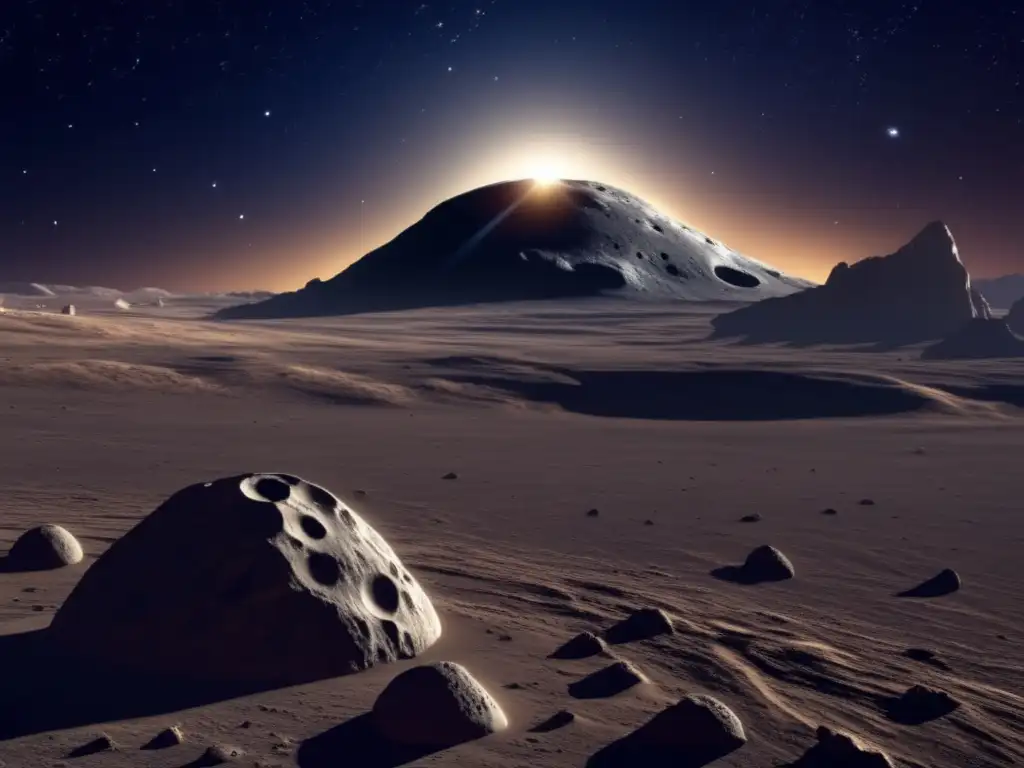The Tale Of Asteroid Euryalus

Introduction
Asteroids have fascinated scientists and astronomers for centuries. These celestial bodies, often referred to as "minor planets," play a significant role in understanding the history and composition of our solar system. In this article, we will delve into the captivating world of asteroid Euryalus, exploring its mythology, history, and cultural significance.
Mythology of Euryalus

Euryalus in Greek Mythology
In Greek mythology, Euryalus was a renowned archer and warrior from the Trojan War. He was one of the many heroes who fought alongside the Greeks against the Trojans. Euryalus' brave deeds and impressive skills with a bow and arrow made him a legendary figure in ancient Greek culture.
Euryalus in Roman Mythology
In Roman mythology, Euryalus was celebrated as a skilled horseman and charioteer. He was often depicted riding a magnificent steed and participating in thrilling chariot races. Euryalus' exploits on the battlefield and in sporting events made him a revered figure among the Romans.
Euryalus as an Asteroid
The asteroid Euryalus was named in honor of the mythical hero from Greek and Roman mythology. Discovered on September 22, 1857, by astronomer Hermann Mayer Salomon Goldschmidt, it is classified as a main-belt asteroid. With a diameter of approximately 73 kilometers, Euryalus orbits the Sun between Mars and Jupiter.
Exploring Euryalus

Physical Characteristics
Euryalus boasts a composition primarily made up of silicate minerals, similar to many other asteroids in the main belt. Its surface is believed to be rocky and heavily cratered, indicating a long history of collisions with other space debris. Scientists have also detected traces of organic compounds on Euryalus, providing valuable insights into the building blocks of life within the solar system.
Orbital Dynamics
Euryalus follows an elliptical orbit around the Sun, with an average distance of approximately 2.61 astronomical units (AU). It takes Euryalus approximately 4.29 years to complete one revolution around our star. The asteroid's orbital path lies within the inner region of the main asteroid belt, making it a fascinating subject for further study and observation.
Scientific Research and Discoveries
Over the years, astronomers have conducted various studies and observations of Euryalus to deepen our understanding of its physical properties and composition. Through spectroscopic analysis, researchers have determined that the asteroid belongs to the S-type asteroid group, indicating a stony composition. These findings contribute to our broader understanding of the asteroid population and their role in the formation and evolution of the solar system.
Cultural Significance

Influence on Literature and Art
The tale of Euryalus has inspired numerous works of literature and art throughout history. From epic poems like Homer's "Iliad" to Renaissance paintings depicting scenes from the Trojan War, Euryalus' bravery and heroism have captured the imagination of artists and writers alike. The asteroid Euryalus serves as a reminder of these significant cultural influences.
Asteroid Naming Conventions
Naming asteroids after mythological figures, historical figures, and scientists is a common practice in astronomy. These names not only honor important individuals but also help create a connection between the scientific community and the general public. By choosing the name Euryalus for this asteroid, astronomers pay homage to the rich mythology and cultural heritage of ancient Greece and Rome.
Public Interest and Education
Asteroids, including Euryalus, generate public interest due to their unique features and the mysteries they hold. The study of asteroids provides valuable insights into the formation of our solar system and the potential threats they pose to Earth. Educating the public about these celestial objects through websites like Asteroid Realm fosters scientific curiosity and encourages engagement with astronomy and space exploration.
Frequently Asked Questions

-
Can Euryalus pose a threat to Earth?
No, Euryalus' orbit keeps it safely within the main asteroid belt. It poses no threat to Earth.
-
What are the implications of finding organic compounds on Euryalus?
The discovery of organic compounds on Euryalus provides clues about the potential for life beyond Earth and the delivery of essential building blocks for life through asteroid impacts.
-
Are there any future missions planned to explore Euryalus?
As of now, there are no specific missions planned to explore Euryalus. However, it remains a subject of ongoing research and observation by astronomers around the world.
-
How does the naming process for asteroids work?
Asteroids are typically named by their discoverers, who follow guidelines established by the International Astronomical Union (IAU). These guidelines often involve themes related to mythology, history, and scientific achievements.
-
What are some other notable asteroids named after mythological figures?
There are numerous asteroids named after mythological figures, including Apollo, Juno, Hermes, and Diana, to name a few.
Conclusion
Euryalus, both as a mythical hero and as an asteroid, holds a significant place in human culture and scientific exploration. Its mythology captivates our imagination, while its study sheds light on the mysteries of our solar system. By understanding the tales, history, and characteristics of asteroids like Euryalus, we deepen our appreciation for the wonders that exist beyond our planet.
We invite you to share your thoughts and engage with www.asteroidrealm.com. Feel free to subscribe to stay updated on the latest asteroid discoveries, share this article on social networks, and continue exploring the fascinating world of asteroids.
Additional Resources

For further information on asteroids and related topics, check out these resources:
- NASA's Asteroid Website
- NASA's Solar System Exploration: Asteroids, Comets, and Meteors
- International Astronomical Union (IAU) - Naming Astronomical Objects
 The Intriguing Nature Of Asteroid Diomedes
The Intriguing Nature Of Asteroid Diomedes What We Know About Asteroid Menelaus
What We Know About Asteroid Menelaus A Closer Look At Asteroid Antilochus
A Closer Look At Asteroid AntilochusIf you want to discover more articles similar to The Tale Of Asteroid Euryalus, you can visit the Asteroid Profiles category.
Leave a Reply

Articulos relacionados: